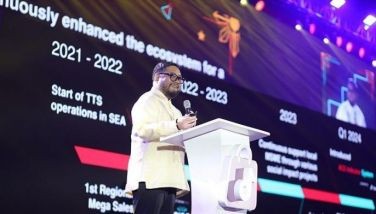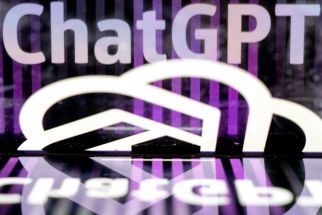Manila-Bangalore 2 - MY TWO CENTS’ WORTH
March 14, 2001 | 12:00am
I was purging my pile of business magazines last weekend (at the request of my wife, else it was going to be purged for me) when I came upon a Forbes article on Infosys and how the other Indian software companies are the key sources for world software outsourcing.
Infosys is now one of the leading software houses in the world. Started in 1981 with US$250 and six software engineers, it is now a Nasdaq-traded entity with US$360 million in revenue and a market capitalization of $17.5 billion. It now hires 3,000 annually from a pool of 183,000 applicants. Its total headcount runs in excess of 25,000 with a 10% attrition rate.
Some key statistics on India’s industry:
185 of the top 500 US corporations outsource software development to India.
130,000 Indians graduate with an engineering degree or a master’s in computer science.
India is estimated to have exported US$6 billion in software services to the US.
US$50 billion is the estimated size of the Indian software service export in 2008, seven years from now. These statistics are quite impressive. I am sure the typical Filipino (expert in crab mentality) can look at the flaws of what India has.
The Indian software services industry succeeded despite the lack of literacy (50%), unreliable phone and electrical services, decrepit airports and roads. And according to the article, India has a corrupt and incompetent government that always runs budget deficits, starving the private sector of development funds. (Sounds awfully familiar)
Where India used to be the destination for drudgework such as debugging code and the Y2K testing, Infosys is now winning complex and valuable contracts that used to only go to the likes of IBM, EDS and Accenture (used to be called Andersen Consulting). The bottomline, these programmers are better, cheaper and deliver on time  a value proposition.
In a recent study from Carnegie Mellon, Indian companies like Wipro and Tata Consultancy Service, delivered more than 90% on time, compared to the US average of 60 to 65%. Infosys’ average revenue per info tech worker is now US$81,000, double from four years ago.
It is now a destination for call center development because of our English skills. Nokia and Ericsson are now looking at the Philippines for wireless programming. Our good programmers can match the best of them, but there are not enough of them.
Our literacy rate is dropping though still in the 90’s, our public works infrastructure is bad and turning worse. The telephone infrastructure is still bad, but because of the recent deregulation in mobile telephony, is catching up real fast. Our government is...(hmmm...what was that about keeping quiet when you can’t say something nice), but let’s hope it improves.
The cost of doing business is still a key factor. Labor is still a problem from both technical competence and sheer supply standpoints and let’s not even think if the union comes in. The total cost of business is still relatively high. Our electricity costs and other utilities are the highest in the region.
My Two Cents: At the risk of sounding like a broken record, the Philippines has a window through which to compete. We need a master plan to attack and strategically position the Philippines in the next 20 years.
We need to build infrastructure to lower our cost of doing business; we need to wire our cities to be Web-enabled. We need to build better tech soldiers, which means better schools and training centers. If need be, we must import Indian teachers to teach us the best of their world and learn from them.
For those in charge, the words "pink slips" come to mind, but Nasdaq is down on technology right now.
The Philippine Stock Exchange had a huge bump when the "wrist-banded one" was asked to leave office, at least more than 30% on the first trading day. In the nine weeks ended March 2, the Phisix was up 12.7%.
For the similar period, the Nasdaq is down 7.6%. Last Friday was a bloodbath on the Nasdaq. Yahoo fell 11%; Oracle, 21%; Ariba, 21%; Commerce One, 14%. All these price drops were precipitated by earnings warnings from Oracle. The warnings continue and the stocks continue to drop.
Not even Intel and EMC were exempt; both technology benchmark stocks have fallen as well. Intel fell from a high in the 70’s last August; EMC which fell to the 40’s level from its high in the 100’s, is alive and volatile.
The market clearly has shifted away from investing in brilliant CEOs and entrepreneurs with world-changing concepts (concept plays as they call it) and back to fundamentals where value and business velocity are important. The market is a ruthless judge. It has forced the closing of eToys (p.s. for those bargain hunters out there, the eToys clearance sale takes up to 75% off) and the departure of key executives at Yahoo. The market will continue to cleanse itself of non-performers.
My Two Cents: Is the glass half-empty or half-full? For players with a medium-term optimistic horizon, we should start to bottom fish for either Ariba or Commerce One.
For the Philippines, although there is still euphoric interest in the market, there is still at least a six-month lag before the foreign funds come back as they are still in the wait-and-see mode of how GMA stacks her management deck.
Dickson Co is CFO of both Dfnn.com and HatchAsia.com. For comments and suggestions, e-mail [email protected].
Infosys is now one of the leading software houses in the world. Started in 1981 with US$250 and six software engineers, it is now a Nasdaq-traded entity with US$360 million in revenue and a market capitalization of $17.5 billion. It now hires 3,000 annually from a pool of 183,000 applicants. Its total headcount runs in excess of 25,000 with a 10% attrition rate.
Some key statistics on India’s industry:
185 of the top 500 US corporations outsource software development to India.
130,000 Indians graduate with an engineering degree or a master’s in computer science.
India is estimated to have exported US$6 billion in software services to the US.
US$50 billion is the estimated size of the Indian software service export in 2008, seven years from now. These statistics are quite impressive. I am sure the typical Filipino (expert in crab mentality) can look at the flaws of what India has.
The Indian software services industry succeeded despite the lack of literacy (50%), unreliable phone and electrical services, decrepit airports and roads. And according to the article, India has a corrupt and incompetent government that always runs budget deficits, starving the private sector of development funds. (Sounds awfully familiar)
In a recent study from Carnegie Mellon, Indian companies like Wipro and Tata Consultancy Service, delivered more than 90% on time, compared to the US average of 60 to 65%. Infosys’ average revenue per info tech worker is now US$81,000, double from four years ago.
Our literacy rate is dropping though still in the 90’s, our public works infrastructure is bad and turning worse. The telephone infrastructure is still bad, but because of the recent deregulation in mobile telephony, is catching up real fast. Our government is...(hmmm...what was that about keeping quiet when you can’t say something nice), but let’s hope it improves.
The cost of doing business is still a key factor. Labor is still a problem from both technical competence and sheer supply standpoints and let’s not even think if the union comes in. The total cost of business is still relatively high. Our electricity costs and other utilities are the highest in the region.
My Two Cents: At the risk of sounding like a broken record, the Philippines has a window through which to compete. We need a master plan to attack and strategically position the Philippines in the next 20 years.
We need to build infrastructure to lower our cost of doing business; we need to wire our cities to be Web-enabled. We need to build better tech soldiers, which means better schools and training centers. If need be, we must import Indian teachers to teach us the best of their world and learn from them.
The Philippine Stock Exchange had a huge bump when the "wrist-banded one" was asked to leave office, at least more than 30% on the first trading day. In the nine weeks ended March 2, the Phisix was up 12.7%.
For the similar period, the Nasdaq is down 7.6%. Last Friday was a bloodbath on the Nasdaq. Yahoo fell 11%; Oracle, 21%; Ariba, 21%; Commerce One, 14%. All these price drops were precipitated by earnings warnings from Oracle. The warnings continue and the stocks continue to drop.
Not even Intel and EMC were exempt; both technology benchmark stocks have fallen as well. Intel fell from a high in the 70’s last August; EMC which fell to the 40’s level from its high in the 100’s, is alive and volatile.
The market clearly has shifted away from investing in brilliant CEOs and entrepreneurs with world-changing concepts (concept plays as they call it) and back to fundamentals where value and business velocity are important. The market is a ruthless judge. It has forced the closing of eToys (p.s. for those bargain hunters out there, the eToys clearance sale takes up to 75% off) and the departure of key executives at Yahoo. The market will continue to cleanse itself of non-performers.
My Two Cents: Is the glass half-empty or half-full? For players with a medium-term optimistic horizon, we should start to bottom fish for either Ariba or Commerce One.
For the Philippines, although there is still euphoric interest in the market, there is still at least a six-month lag before the foreign funds come back as they are still in the wait-and-see mode of how GMA stacks her management deck.
BrandSpace Articles
<
>
- Latest
Latest
Latest
April 25, 2024 - 5:56pm
April 25, 2024 - 5:56pm
April 24, 2024 - 1:00pm
April 24, 2024 - 1:00pm
April 24, 2024 - 12:00am
April 24, 2024 - 12:00am
Recommended


























